Hands on With the iPad Pro and iPad Mini 4
by Joshua Ho on September 10, 2015 8:00 AM EST- Posted in
- Tablets
- Apple
- Mobile
- iPad Pro
- iPad Mini 4
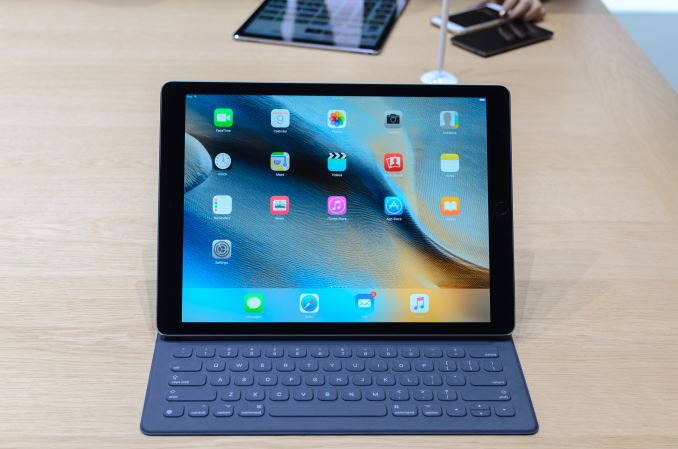
While the iPhones are an important aspect of Apple’s September annual announcements, the real surprise of the show was the iPad Pro and iPad Mini 4. For those that aren’t up to speed with the basics of these two tablets, the iPad Mini 4 was only mentioned in passing in the announcement but it effectively gives you the iPad Air 2 with an A8 SoC in a mini formfactor. This means that the display is now close to 100% sRGB and there is the iPad Air 2 anti-reflective coating on top. I’m not sure if the iPad Mini 4 makes the jump to an IGZO display for better battery life, but the iPad Mini 4 is now the closest it’s ever been to the iPad Air sibling.
The iPad Pro received an enormous amount of event time, and given just how big of a departure it is from previous iPads, I can understand why. The move from 9.7 to 12.9 inches really does make the iPad Pro far better for content consumption and productivity purposes. The increase in size does make it harder to maneuver when used purely as a multi-touch tablet. While a 9.7” tablet like the iPad Air 2 could be used for reading in bed or something similar, I have a feeling that the iPad Pro might be uncomfortable when using it for similar purposes. The tablet is definitely light though, as the density feels similar to the iPad Air 2 but scaled up to the larger size.
Outside of simple size and weight, the display of the iPad Pro was genuinely impressive in person. It looks like the AR coating used is similar to the iPad Air 2, and because the pixel density was maintained from the iPad Air despite the larger display the average longer viewing distance meant that it’s really much harder to make out pixels from a normal viewing distance than before. For watching movies and other forms of media consumption I was unable to test the speakers properly in the demo area, but I look forward to really trying out the speakers in a more private and quiet environment that I suspect most people would be using these speakers for.
While the iPad Pro looks like it would be a solid tablet for gaming and other intensive apps given the A9X performance claims, quite frankly it would be a rather boring tablet if it was just a bigger iPad Air. Fortunately, it seems Apple has recognized that a pure multi-touch experience on the laptop isn’t enough and has created two accessories that are arguably integral to what differentiates the iPad Pro from most tablets. The two accessories are the keyboard cover and stylus, or what Apple calls the Smart Keyboard and Apple Pencil.
If you were to purely look at the feature set as a check box to be filled, it probably goes without saying that this iPad Pro sounds an awful lot like the Surface Pro. To some extent the comparison is fair, but in others it really fails to capture the differentiation that Apple has created here in terms of user experience and product design. The keyboard is probably the first, and most common accessory that will be used.
The Smart Keyboard is effectively a flip cover case, which unfolds into a stand and a keyboard when in use but otherwise is just a normal flip cover. I was surprised by how good the keyboard feels in practice as the keys feel almost identical to the Macbook. Obviously, this means that there’s basically zero travel available in the keys, but after spending enough time writing long paragraphs on a smartphone with no haptic feedback or sound feedback I really don’t see the value in long keystroke travel or similar things for text input when it comes to mobile devices. I was able to type at 40-60 words per minute almost immediately without a lot of effort, and I suspect that with practice it would be well within reason to reach 90-100 words per minute with this keyboard. One issue I did notice is that the keyboard feels like the keys are spaced out a bit far compared to most laptops today, which might take some getting used to.
This keyboard cover also doesn’t have a trackpad or any way to adjust the angle at which the tablet is mounted. I suspect the missing trackpad is for the better though if my experiences with the Surface Pro trackpad is anything to go by. I do think that Apple missed an opportunity here to do an adjustable angle dock, but I suspect that trying to use the iPad Pro on a lap with the keyboard dock would be a bad idea because gravity is pretty much the only thing holding the entire setup together. On a table, the single angle isn’t a huge problem and I suspect that there were other engineering considerations that made it hard to justify a multiple-angle stand within the cover.
The other aspect of the iPad Pro is the Apple Pencil. This is effectively a stylus, but I suspect the connotation that comes with a stylus is the reasoning for calling this something other than a stylus. In this case, Apple has actually done something surprisingly different with Apple Pencil. We often talk about stylus input as a sort of checkbox feature but a good stylus needs to have the right level of friction on the writing surface to feel natural, along with a wide pressure sensitivity range, high precision, low input latency, and strong palm rejection.
In terms of friction on the glass, the Apple Pencil feels right, with a level of friction that approximates writing with a pen or pencil on paper. The pressure sensitivity range is significant, and at the low end it’s sensitive enough that even the slightest touch of the tip to the display will register input. At the high end, it seems that the pressure range ends a reasonable amount before I’m starting to cause the display glass to flex or the display itself to discolor. It’s good to see that the maximum pressure isn’t something that’s so high that it quickly causes fatigue, which can be a problem in some implementations.
The precision of the stylus is as good as it can get, with pixel-level accuracy. I never felt like there was any kind of stair-stepping or odd interpolation of my input. The input latency is also extremely low, to the point where the inking is pretty much right where the tip is instead of lagging a quarter of an inch behind. Palm rejection also works without any problems as far as I can see, but edge cases could still be a problem without further testing to confirm this.
Angle-dependent input seems to be one neat feature that you could read on a spec sheet and forget about, but after spending a few minutes with it I realized this is actually an incredible feature because it adds an element to the stylus user experience that was present in a pencil/pen/marker but absent in any stylus implementation to my knowledge in a mass-market mobile device. I really think that this will be a feature that takes the Apple Pencil from just a good stylus implementation to the best stylus implementation in the industry.
The design of Apple Pencil in terms of industrial design is also well-executed. The plastic body is much wider than most pen implementations that I’ve seen, with allows for a more comfortable grip in extended use. The weight is also a pretty good approximation of a pen, which also helps with ergonomics. The use of a Lightning connector on the pen itself is a smart idea as the idea of regularly replacing a battery in a stylus to use it sounds absurd when a normal pen or pencil doesn’t really need anything similar. I am concerned about the potential for problems with the use of a male connector though, as it seems like a part that could be easily damaged if the tablet is dropped while the pen is charging from the iPad Pro.
However, the Apple Pencil isn’t perfect from what I can tell. There are two issues that I noticed over the course of my hands-on time, but both aren’t really going to ruin the experience by any means. The first is that Apple Pencil is glossy plastic. While I’m not looking for anodized aluminum or anything similar, glossy plastic will definitely acquire an oily feel to it almost immediately after light use, regardless of how often you wash your hands. I suspect some kind of hard rubber sleeve over the pencil would pretty much solve this problem though. The other minor problem is that Apple Pencil lacks any other buttons, but in discussions with people that actually use Wacom styluses extensively this isn’t necessarily a real problem. It’s also worth noting that Apple Pencil must be paired to an individual iPad Pro, so you can’t just pick up any Apple Pencil and immediately start writing on any iPad Pro.
Overall, I was definitely impressed by the iPad Pro. In the iPad Air 2 review I said that I felt like the iPad was missing in productivity and other applications. With the iPad Pro, Apple has tackled this problem in a very big way. The iPad Pro is still a good tablet like the iPad Air 2, but the addition of the keyboard cover and Apple Pencil opens up a lot of new applications along with significantly improving the user experience of pre-existing ones. It remains to be seen whether this will revitalize the stagnating tablet market, but given the new applications for this tablet I suspect the iPad Pro will at least have a dedicated following.


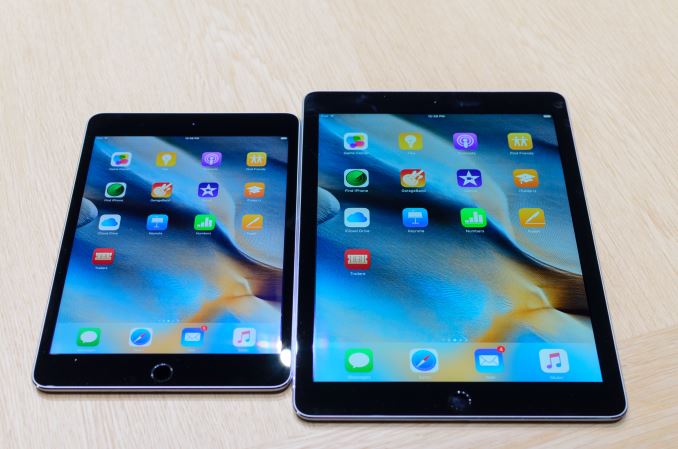
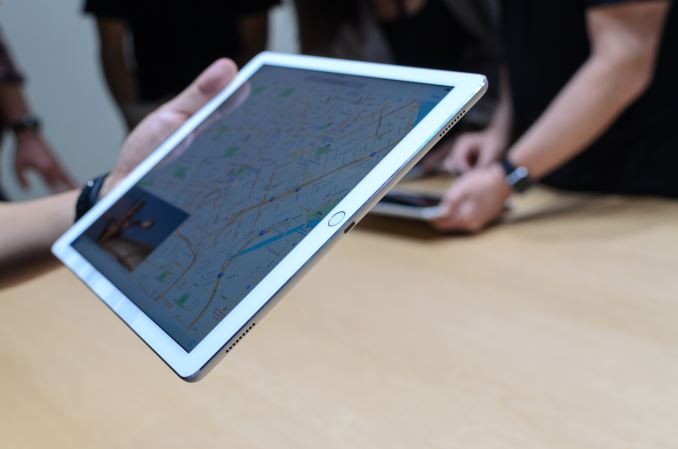
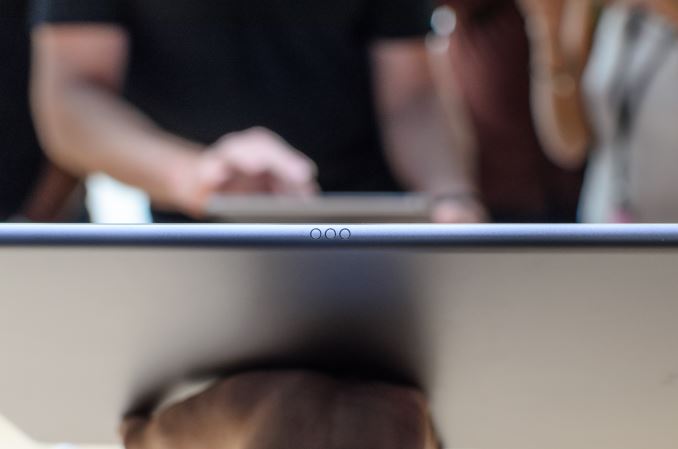
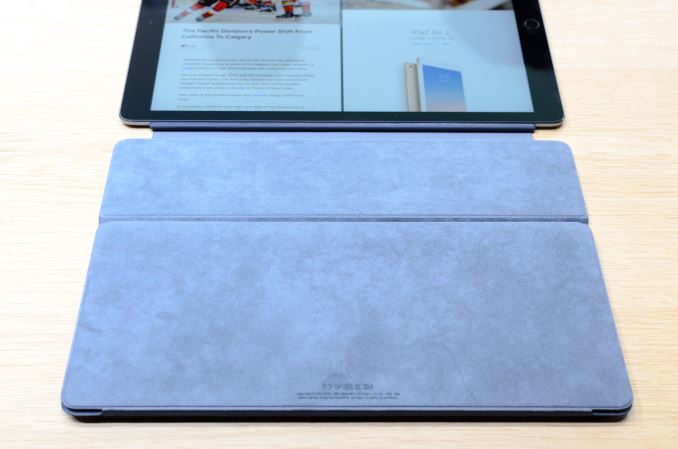
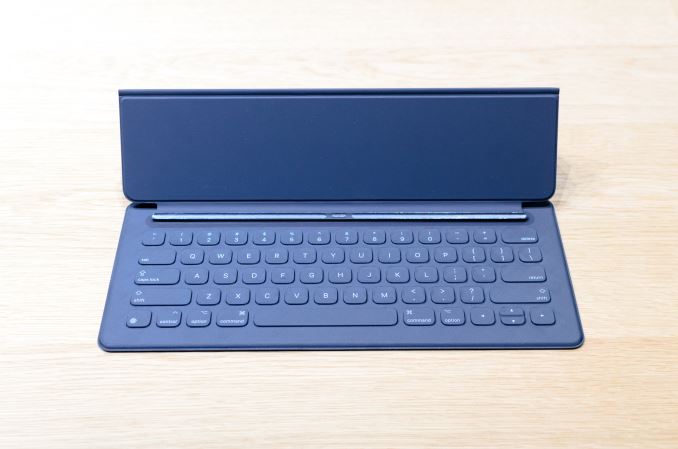
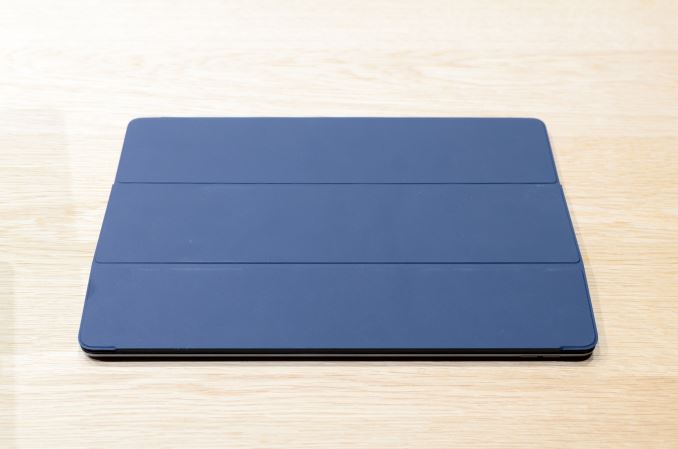
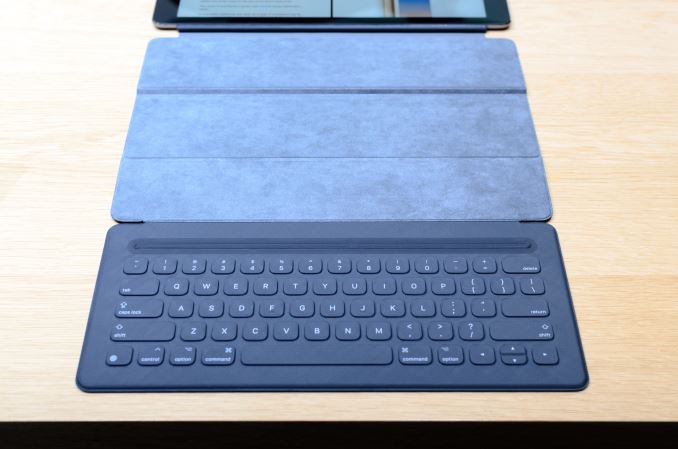
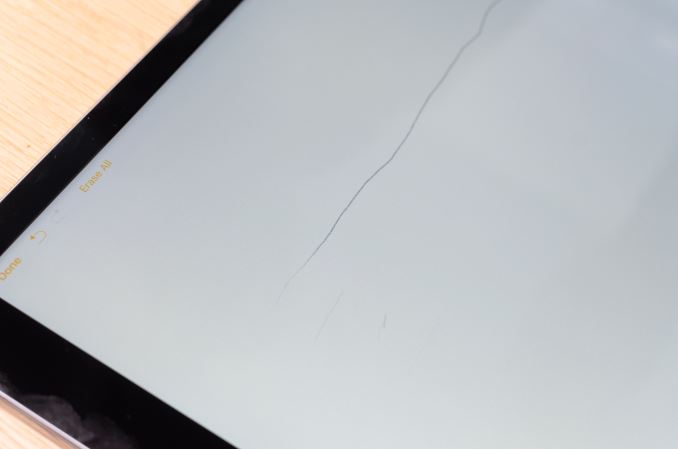
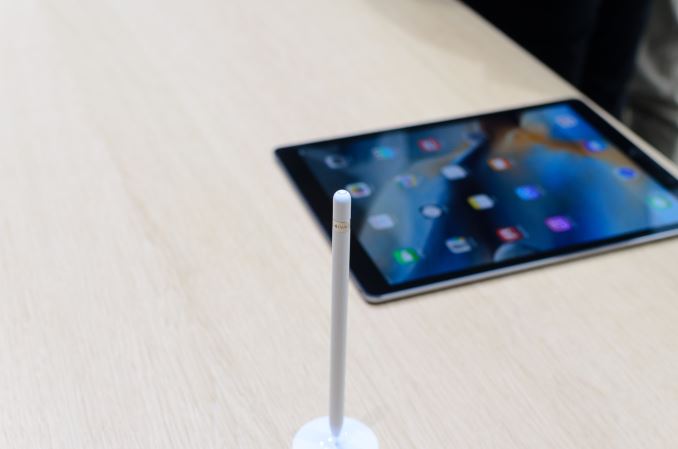
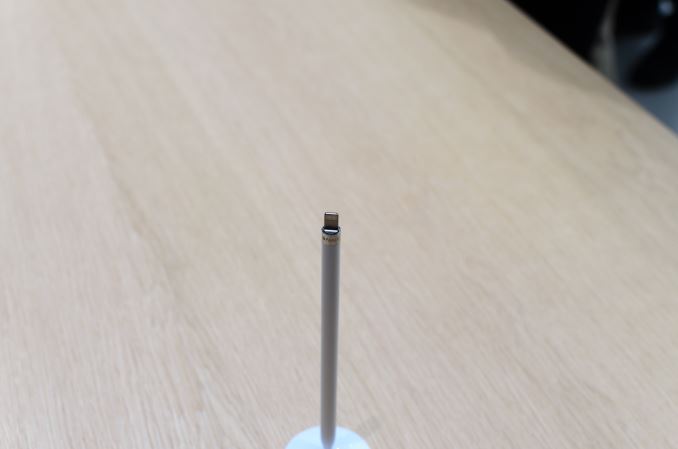
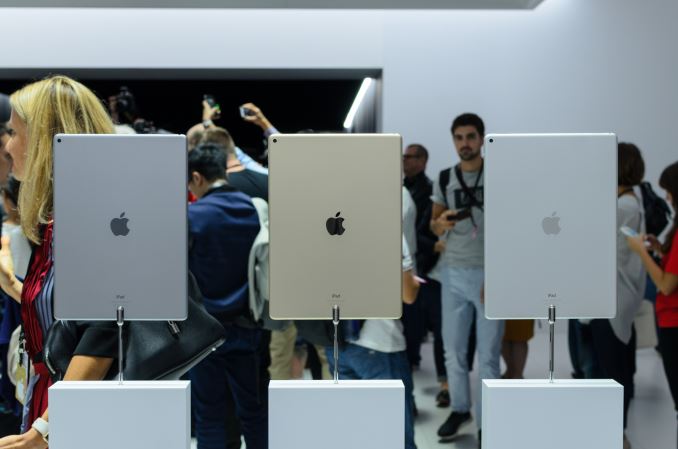








181 Comments
View All Comments
AnnonymousCoward - Saturday, September 12, 2015 - link
iPads suck for a few simple reasons.1. You can't simply hit a button to exit sleep and begin using the device. Is that such a hard concept? They make you swipe across the large screen.
2. Look at the huge icon spacing on the home screen, and there's no way to change it!
3. No way to change the default browser, and its top bar hides as you scroll down, making it a pain to access, with no option to change it. And it's not like screen space is so limited that the essential functions should be hidden
Deelron - Saturday, September 12, 2015 - link
1. You click the home button and leave your finger on the Touch ID button and it unlocks to begin using the device. No swiping needed.2. Opinion, but I can see how that would be undesirable for some people.
3. The top bar reappears the moment you scroll up in any way, which I've never found a pain to access.
Bobs_Your_Uncle - Sunday, September 13, 2015 - link
"Innovation is a new idea, more effective device or process. Innovation can be viewed as the application of better solutions that meet new requirements, inarticulated needs, or existing market needs. This is accomplished through more effective products, processes, services, technologies, or ideas that are readily available to markets, governments and society." - https://en.wikipedia.org/wiki/InnovationBy this definition, a vast array of goods, products, services, etc. may very correctly be considered to possess innovative qualities, incorporate innovative additions or are innovative in their entirety. The degree to which alterations impact existing designs/concepts/utility does not carry a minimum threshold for them to be regarded as "innovative".
Innovative is another "tech word d'jour" that has been used to the point of inducing nausea, & it will continue to be grossly overused until the next "trendy word flavor" emerges.
Overuse of the word is not the objectionable element to "innovative" per se. Rather, "innovative" begins to approach meaninglessness through the vastly overblown sense of "magnificence", "remarkable originality" or "innate superiority" that users of the word infer, imply or outright proclaim for their "whatever",
Fanboyism of any stripe consistently drives words, concepts or expressions into a state of repugnance far more quickly than seemingly any other force at work upon words.
This comment thread is as good an example as any of fanboy hubris, self-aggrandizement & nausea inducing linguistic abuse.
We're well past the point where I've shifted my brand support to Acme! Products are not to blame; it's the reflexive zealotry of brand apologists who are incapable of independent thought & even minimally objective evaluation on merit.
Bobs_Your_Uncle - Sunday, September 13, 2015 - link
PS: Through the strident thrashing din of those hormonal pubescent children who comment (whatever their chronological age might be) thoughtful voices are sincerely appreciated. Dan Neely is one reasoned & measured voice who springs to mind; there are indeed other such voices, easily deserving of a +1, but I'm tired.With thanks to Dan & other reasoned & respectful contributors ... I'm outta here!
gamer1000k - Sunday, September 13, 2015 - link
This is a nicely built piece of hardware (the only big design issue I see is with the stylus (excuse me, "Apple Pencil") that looks far too easy to break while charging), but I have a hard time seeing how this will be more than a niche product, especially with the high prices they're asking.For certain use cases (graphics design, certain types of visualization) this could be a great tool, but as a general productivity device, you're still hamstrung by iOS and the almost complete lack of ports. Some people have argued that pro != laptop replacement, and unfortunately I have to say that for the vast majority of companies, that's really not the case.
Many companies larger than a startup run all kinds of legacy software that will never realistically be supported by anything other than windows, plus windows has a very powerful group policy management system that apple really doesn't have an answer for. The surface pro works as a productivity tablet because it's really a laptop in a tablet form factor. It might not be the best tablet out there, but it takes into the account the reality that most workflows still involve a traditional laptop/desktop.
This might change in the future (and apple probably released this product in an attempt to push the change), but right now at the asking price it's a very hard sell against a surface pro and I don't really see it being successful unless a ton of app developers get onboard and write enough good software to compete with the surface pro's killer feature: legacy x86 support.
digiguy - Monday, September 14, 2015 - link
yes but the vast majority of companies haven't bought a SP3, they are much better off with desktop PCs and laptops. SP3 were mainly bought by private customers, students and some freelance professionals. So large companies won't buy ipad pro any more than SP3. But many other will, including people in the graphic and music industry, as well as many people that have always wanted a larger ipad and, above all, a stylus. At the beginning nobody thought phablets would sell, after all they are more uncomfortable to hold, and still there is a market, as there will probably be a niche but still profitable market for larger tablets, especially from Apple.redzinc - Sunday, September 13, 2015 - link
yes surface pro 3 might be better than ipad pro. But it don't matter. what apple has that Microsoft don't is --- supply chain to match the demand. MS with stay Nadella is done creating devices. they playing safe now. I am in windows ecosystem right now but as soon as 2nd gen ipad come out. I am jumping. this Microsoft company is not consumer company. they are like IBM. i don't care about them as I used.Morawka - Monday, September 14, 2015 - link
i cannot believe apple released a half baked product like this. The pencil can only be used in the notes app on launch day.. They didn't even make a dedicated drawing app for artist to showcase the new pencil.Meanwhile the keyboard/cover is hideous and uses the 3 fold design to keep it upright. Anyone who's used these 2 fold and 3 fold smart covers knows what i'm talking about. They are finicky and move around a lot. not sturdy at all.
a pro tablet without any sd card slot, or usb port. Or how about at least giving us a lightning thumb drive or a osx like filesystem.
this is the worst product apple has released for 8 years. i cant believe so many tech journalist are eating this thing up like it's being spood fed to them.
About the only thing it does right is pen latency and nice touch screen. but that's where it ends.. It's a blown up ipad air searching for a purpose.
msmith_ - Tuesday, September 22, 2015 - link
Joshua,It would be absolutely fantastic if you guys at ANANDTECH could make quantitative measurements of drawing latency when you review the ipad pro for real (comparing it to competing devices like the surface pro 2 (wacom), surface pro 2 (n-trig), galaxy note phone, galaxy note tablet, thinkpad tablet pen, the caciticive (fake) stylus like the wacom bamboo pen etc... This shouldn't be hard to do using high-speed video (there's a high quality 240fps video mode available on the iphone 6 and a couple other smartphone now).
Maybe even include some psuedo-scientific in-the-office testing of "how natural handwriting-based note taking feels?" on the different stylus devices vs a real pen or pencil, and then see how well that perception correlates to latency. Or maybe even post an article with the latencies for competing devices as a lead up to the ipad pro review?
I'm glad that input lag/latency for monitors is now fairly widely reported, but there is an alarming lack of info available on latency for stylus devices. For instance, I've never been able to find a measurement of the pen latency for a MS surface tablet (1, 2, or 3!)... This could be a noteworthy article for you guys like the groundbreaking early SSD coverage/reporting that anand did years ago...
Just my two-cents worth.